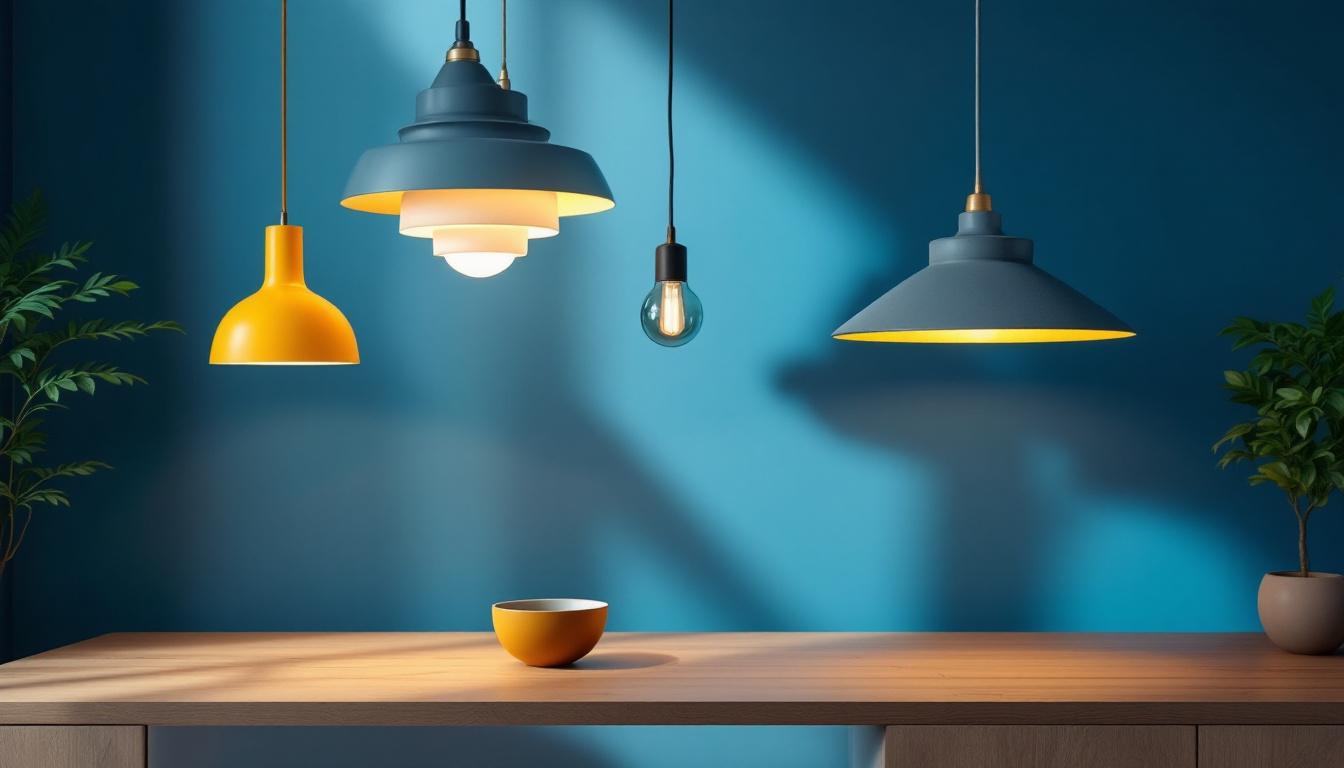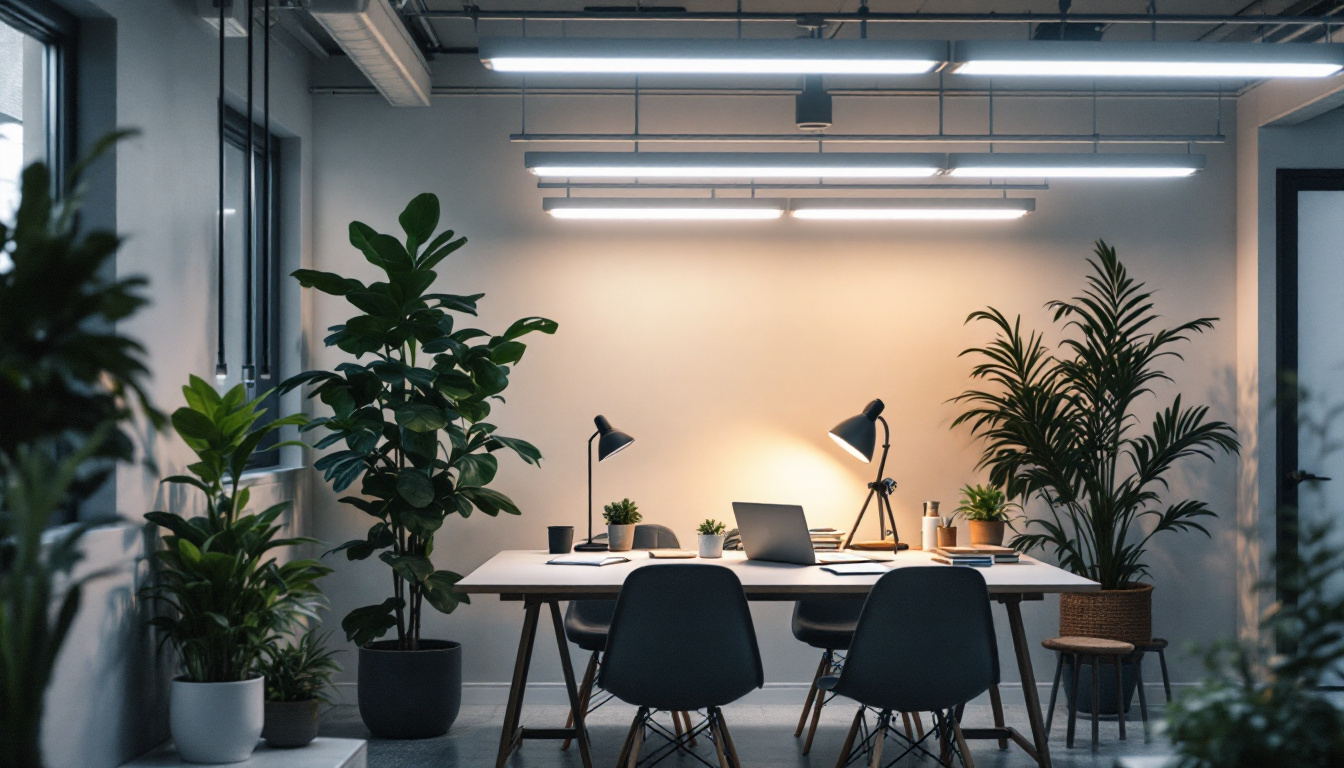
In the world of interior design, lighting plays a pivotal role in shaping the atmosphere and functionality of a space. For lighting contractors, mastering the nuances of interior lighting is essential to delivering exceptional results that meet client expectations. This article delves into the various aspects of interior lighting, providing insights and strategies that contractors can employ to enhance their expertise and elevate their projects.
Before diving into advanced techniques, it is crucial for lighting contractors to grasp the fundamental principles of interior lighting. This knowledge serves as the foundation for creating effective lighting solutions that cater to diverse environments. A solid understanding of these principles not only enhances the aesthetic appeal of a space but also improves its functionality, ensuring that each area serves its intended purpose effectively.
Layered lighting involves the strategic combination of different types of lighting to achieve a balanced and functional illumination scheme. The three primary layers include ambient, task, and accent lighting. Ambient lighting provides overall illumination, task lighting focuses on specific areas for activities such as reading or cooking, and accent lighting highlights architectural features or artwork.
By skillfully integrating these layers, contractors can create dynamic spaces that not only look appealing but also serve practical purposes. Understanding how to balance these layers is a skill that can set a contractor apart in a competitive market. For example, in a home office, ambient lighting can create a comfortable environment, while task lighting, such as adjustable desk lamps, ensures that the workspace is well-lit for productivity. Accent lighting, like LED strips along shelves, can add a touch of personality and make the space feel more inviting.
Color temperature, measured in Kelvin (K), significantly influences the mood and perception of a space. Warm light (around 2700K to 3000K) creates a cozy and inviting atmosphere, ideal for living rooms and bedrooms. In contrast, cooler light (above 4000K) is more energizing and suitable for workspaces and kitchens.
Lighting contractors should educate clients on the importance of selecting the appropriate color temperature for each area. This knowledge not only enhances the aesthetic appeal but also improves functionality and comfort in the space. For instance, a restaurant might benefit from warm lighting to create an intimate dining experience, while a retail store may opt for cooler lighting to highlight products and encourage a sense of alertness among shoppers. Understanding these nuances can help contractors tailor their lighting designs to meet specific client needs.
Choosing the right light fixtures is crucial for achieving the desired lighting effect. From chandeliers and pendant lights to recessed lights and wall sconces, each fixture serves a unique purpose and contributes to the overall design.
Contractors should be well-versed in the various types of fixtures available, as well as their applications. For instance, pendant lights can be used to create a focal point over dining areas, while recessed lighting can provide seamless illumination in modern spaces. By understanding the strengths and weaknesses of each fixture type, contractors can make informed recommendations to clients. Additionally, the rise of smart lighting technology has introduced new possibilities in fixture selection, allowing for customizable lighting solutions that can adapt to different occasions and moods. This flexibility not only enhances user experience but also opens up new avenues for creativity in lighting design, making it essential for contractors to stay updated on the latest trends and innovations in the industry.
Once the basics are mastered, lighting contractors can explore advanced techniques that elevate their designs and set them apart from the competition. These techniques involve a deeper understanding of design principles, technology, and client needs.
In an age where technology is rapidly advancing, smart lighting solutions have become increasingly popular. These systems allow for remote control, automation, and customization of lighting settings, providing users with unparalleled convenience and flexibility.
Contractors should familiarize themselves with the various smart lighting options available, including app-controlled systems, motion sensors, and programmable schedules. By integrating smart technology into their designs, contractors can offer clients enhanced functionality and energy efficiency, making their services more appealing. Furthermore, the integration of voice-activated systems, such as those compatible with Amazon Alexa or Google Assistant, can further streamline user experience, allowing for hands-free control of lighting. This not only adds a layer of sophistication to the design but also aligns with the growing trend of home automation, where everything from security to climate control can be managed seamlessly.
natural light is a powerful element in interior design, contributing to mood, productivity, and overall well-being. Lighting contractors should consider how to maximize natural light in their designs, whether through the strategic placement of windows, skylights, or reflective surfaces.
Additionally, understanding the movement of natural light throughout the day can help contractors determine the best lighting solutions for different times. This approach not only enhances the aesthetic appeal of a space but also promotes a healthier indoor environment. Techniques such as using light tubes or solar tubes can bring daylight into spaces that are otherwise dark, while also reducing reliance on artificial lighting during the day. Moreover, the use of light-diffusing materials can soften harsh sunlight, creating a more inviting atmosphere that adjusts naturally with the changing light conditions outside.
A well-thought-out lighting plan is essential for any successful interior lighting project. This plan should encompass all aspects of the lighting design, including fixture selection, placement, and control systems. A comprehensive lighting plan ensures that all layers of lighting work harmoniously together to achieve the desired effect.
Contractors should take the time to consult with clients during the planning phase, discussing their needs, preferences, and lifestyle. This collaborative approach fosters a sense of ownership and satisfaction, leading to a more successful outcome. Additionally, considering the psychological effects of different lighting temperatures—such as warm versus cool light—can further enhance the emotional response to a space. By incorporating elements like task lighting for work areas and ambient lighting for relaxation zones, contractors can create a dynamic environment that caters to various activities and moods throughout the day.
Even the most experienced lighting contractors encounter challenges in their projects. Recognizing and addressing these challenges is key to delivering successful results.
Interior spaces often come with constraints, whether due to size, layout, or existing architectural features. Contractors must be adept at finding creative solutions to maximize lighting effectiveness in these situations.
For example, in smaller spaces, using mirrors can help reflect light and create an illusion of depth. Additionally, selecting fixtures that do not overwhelm the space can maintain a sense of openness while still providing adequate illumination.
Every project comes with its own set of client expectations and budgetary limitations. Lighting contractors must navigate these factors carefully, ensuring that they deliver high-quality results without compromising on the client’s vision.
Effective communication is essential in these situations. Contractors should be transparent about what is feasible within the budget and offer alternative solutions that align with the client’s goals. This approach not only fosters trust but also enhances the contractor’s reputation for professionalism.
The lighting industry is constantly evolving, with new technologies, styles, and trends emerging regularly. Lighting contractors must stay informed about these changes to remain competitive and offer the best solutions to their clients.
Attending trade shows, participating in workshops, and following industry publications are excellent ways for contractors to stay current. By continuously expanding their knowledge, they can provide innovative solutions that meet the ever-changing demands of the market.
Strong client relationships are the cornerstone of a successful lighting contractor’s business. Building trust and rapport with clients can lead to repeat business, referrals, and a positive reputation in the industry.
Clear and open communication is vital throughout the entire project lifecycle. From the initial consultation to the final installation, contractors should keep clients informed about progress, challenges, and any changes to the plan.
Listening to client feedback and addressing concerns promptly can help build a strong relationship. By demonstrating that their needs are a priority, contractors can foster loyalty and satisfaction.
Exceptional customer service goes beyond just delivering a quality product. It encompasses the entire experience a client has with a contractor, from the first interaction to post-installation support.
Contractors should be proactive in offering assistance, whether it’s answering questions about maintenance or providing guidance on how to use smart lighting systems. By going the extra mile, contractors can create a lasting impression that encourages clients to recommend their services to others.
Feedback is a valuable tool for growth and improvement. Lighting contractors should actively seek input from clients after project completion to understand their level of satisfaction and identify areas for enhancement.
Positive testimonials can also serve as powerful marketing tools. By showcasing successful projects and satisfied clients, contractors can build credibility and attract new business. Encouraging clients to share their experiences can significantly enhance a contractor’s reputation.
Mastering interior lighting is a multifaceted endeavor that requires a blend of technical knowledge, creativity, and interpersonal skills. Lighting contractors who invest time in understanding the fundamentals, exploring advanced techniques, and building strong client relationships will find themselves well-equipped to excel in their field.
By staying informed about industry trends and continuously honing their skills, lighting contractors can deliver exceptional results that not only meet but exceed client expectations. Ultimately, the mastery of interior lighting not only enhances the beauty and functionality of spaces but also contributes to the overall satisfaction of clients, paving the way for a successful and rewarding career in the lighting industry.
Ready to elevate your interior lighting designs and exceed client expectations? At LumenWholesale, we provide lighting contractors with the highest quality, spec-grade lighting products at unmatched wholesale prices. Say goodbye to local distributor markups and hello to a vast selection of reliable, high-performance lighting that meets rigorous industry standards. With the added convenience of free shipping on bulk orders, you can ensure your projects shine without the burden of hidden fees. Make the smart choice for quality, affordability, and convenience. Discover wholesale lighting at the best value today and bring your lighting mastery to light with LumenWholesale.

Discover expert hacks for designer pendant lighting that elevate your projects.

Discover the insider techniques lighting contractors use to bypass ballast systems efficiently.

Discover the intricacies of light control systems tailored for lighting contractors.

Discover how 8 ft fluorescent lamps can be the key to future-proofing your lighting projects.